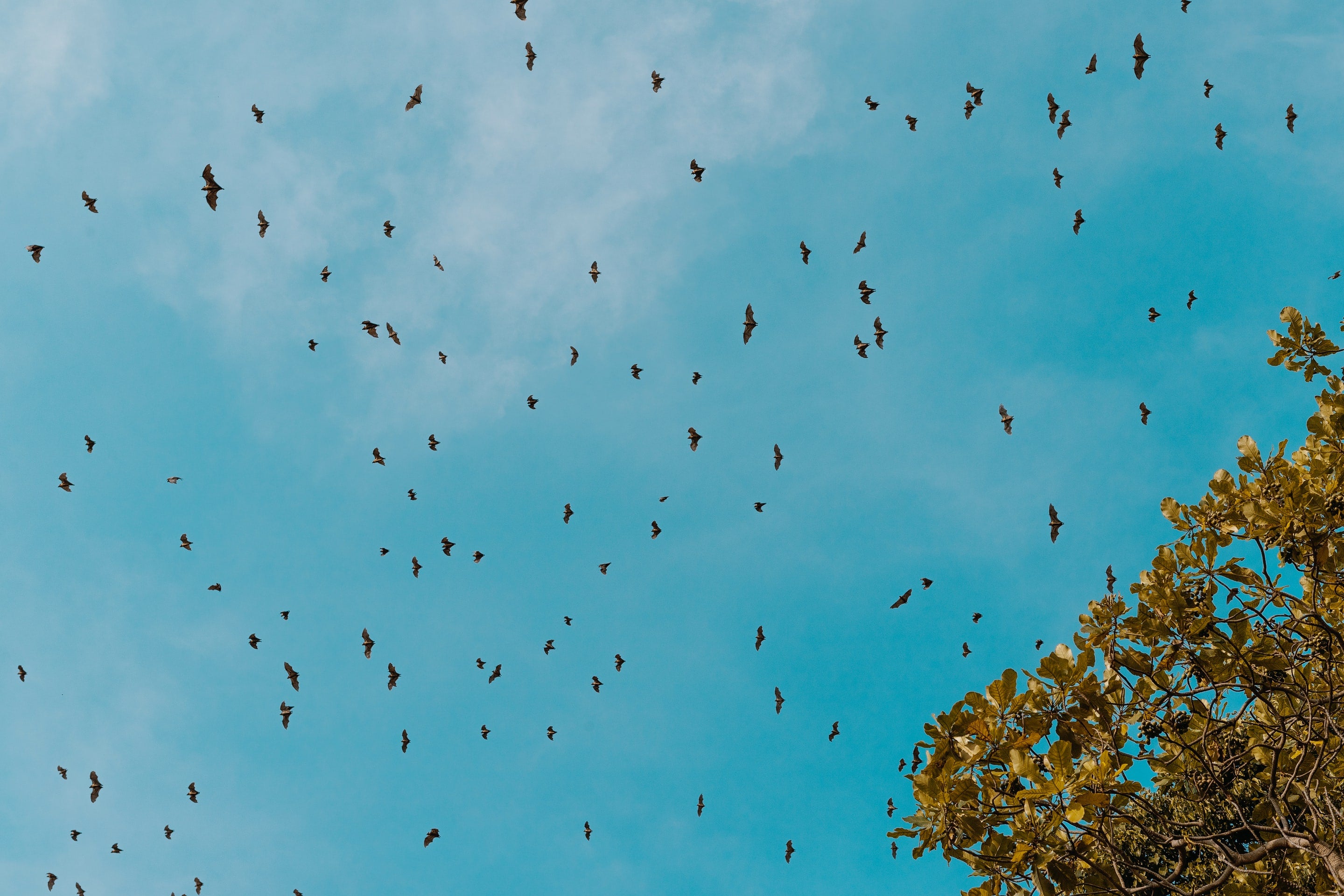Everything You Need to Know about Bat Boxes - Installation, Features, Placement, and More!

Ever wondered how these silent creatures of the night are much more than vampire shows, and mythical scares?
Bats play an important role in balancing our ecosystem.
They eat small insects and as a matter of fact, they might eat as much as their total body count, inevitably maintaining a healthy balance of pesticides, insects, and bugs in our environment.
Given the fast-paced changes in land, bats' natural habitats are largely endangered. Therefore, the initiation of bat houses and bat house plans has played an important role in bat conversation for years.
Out of many (up to 47 species), many bat species are endangered. Which makes their conservation all the more important. It is important to assert a healthy environment for these bats before they completely vanish from our ecosystem. Bat houses' plan is one way of ensuring these bats have a safe yet still free way of surviving in their natural habitat.
When did Bat House first Start?
Earlier in the 1980s, bats would reside in small spaces within buildings and houses. Most of the time it’ll be dark attics or chimneys. But the worst of all was how people tried to get rid of them. Oftentimes they would block their attics, using truck exhausts, using pesticides, and allowing only one-way passages resulting in the sudden decline of bats in certain areas.
Of course, a decline in bat population became a serious concern and their conservation sites had to be made. Over time bat houses were introduced and with each passing year, a new module of the bat house plan was made for better-maintained bat conservation.
How the houses will be made, where they will be placed, and how they can attract most bats, all these questions improved bat quality of life over the years, and today we have some of the finest bat houses that offer safe roosts for bats in a well-placed settlement.
How did the bats start coming into bat houses?
Attracting bats to bat houses has been relatively easier. These bat houses have given a fair chance for less human-bat conflict and much more controlled roosting spaces in buildings.
The idea behind these bat houses was to provide as much safe space for bats as possible.
To understand bat houses, there are two main types of bat boxes.
First is a simple crevice bat house space with baffles all over to provide a roosting space. Whereas on the other hand there are rocket-style house spaces that basically mimic dark tree barks of old trees where bats usually go for rest.
Want to know more about bats? Reading some interesting facts and myths about bats here!
Bat boxes and bat houses have proven to be excellent alternatives to dark attics. Not only did this solve resident buildings' problems it also happens to be more safe and healthy for bat survival.
Over time bat houses became a smarter way of utilization as many people started installing them where they could attract more bats that were prodigious insect eaters. These bat houses are open from the bottom so bat droppings have fallen directly to the ground with fewer cleaning opportunities and hence less human intervention.
Bat box installation is also an important step in bat house planning. So what is the installation process and how to do it?
Just to help with your curiosity here are some commonly asked questions for bat house installations
Where to put a bat house?
Bat houses placement should be careful and should be done after some thorough search of your area. First of all, you should choose a big plane area for mounting bat houses. All of the bat houses must be placed at least 10 feet high above the ground. An ideal height must be at least 20-25 feet high.
Where to put a bat house in your yard?
If you are installing a bat house at the back of your yard, then it's best to choose a good sunny location for your bat box where it is exposed to at least a few hours of consistent sunlight. Remember, bats hibernate in colder climates, therefore placing them in the colder areas of your yard might not be the best option.
How to install a bat house
- Choose the right location. There are many factors involved here. Bats are known to find bat boxes mounted on buildings and tall poles much faster than on trees.
- Find the right temperature. Make sure your bat box is not in a less sunny, cold region.
- Make sure there is enough food and water supply nearby. Oftentimes it takes up to long months or even years for bats to settle well in bat houses because of food and water scarcity.
Bat house installation height?
Bat house must be installed at least 20-25 feet high above the ground for bats to easily make their way through.
How to mount a bat house?
One of the best ways to mount a bat house is to get a long hard wooden pole. Many people install bat houses at the top of their buildings and rooftops as well.
How to attract new bats to your bat houses?
Once you have your bat box plan fully done, you can start with small steps for attracting more bats. If you have done your bat house positioning right, chances are that most bats will come to your installed bat house on their own.
To have more bat colonies, you must always keep a water source running. For example, installing a very small pond, just a small isolated stream of water can do wonders for attracting bats. Grow night-scented flowers.
This is important as it will attract more insects and hence more food opportunities for bats. Some bats also survive on pollens and flower nectars.
An Easy Bat House Plan
It is important to look out for a good bat house construction and design when installing bat boxes. It is of key importance to look for good heat regulation, as this will attract most bats for their roosting needs.
The easiest way to do that is to provide a relatively wide, air-sealed proof that allows the roof of the bat box to act as a solar heat collector. There must be a ventilation slot made as well for easy temperature regulation.
Due to certain types of bat houses, you will find different sizes of bat houses.
Bat House Manuals
Getting involved in conservation starts first and foremost with building a suitable bat house. You can either make yourself one OR get a Merlin Tuttle Bat Conservation -certified bat house such as big bat box that mimics a dark space like that of a tree.
For a DIY Bat house feature, all you would need is rough-cut blocks of wood (you can also tame the edges), some tools to cut and assemble the block wood, and a compass to determine where to place the bat box.
Colour and features of bat houses
Painting your bat house the right color is important. It's best to color a dark color of your bat house for more heat absorption. Installing heaters and other temperature regulators can also come in handy!
Pro tip: whenever you are installing bat houses, make sure you install different bat houses at different localities, in different colors in different orientations. This will help you determine which feature is best for the most suitable bat house.
Benefits of Bat Houses
Here are a couple of reasons why artificial roosters should be installed for bats;
- Bat roosters are particularly helpful in reducing human-bat interaction. Remember all the hype about why bats in buildings and attics are a bad choice? Well, guess this is where bat houses are super beneficial.
- Installing bat houses in yards can particularly help in reducing pesticide, and insect ration in your field. A free pesticide alternative for your house plants.
- Bat boxes give females a safe zone to safely raise and feed their young. Bat populations grow slowly and need to be well looked after. One female bat is known to produce only one pup each year. By installing bat houses all over your land you can provide a safe zone for bat mothers and their pups.
Wrapping it all up!
In this triple climate crisis, it becomes all the more important to conserve bats. Mounting bat houses and getting them placed in the right place can help a lot of displaced house colonies. Once you are through the bat house placement, the next most important step is to know how to maintain a bat house. While bat conservation is important, it is also equally important to be aware of human health concerns.



